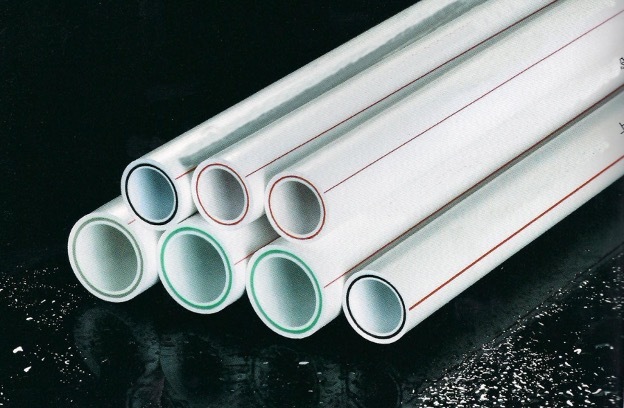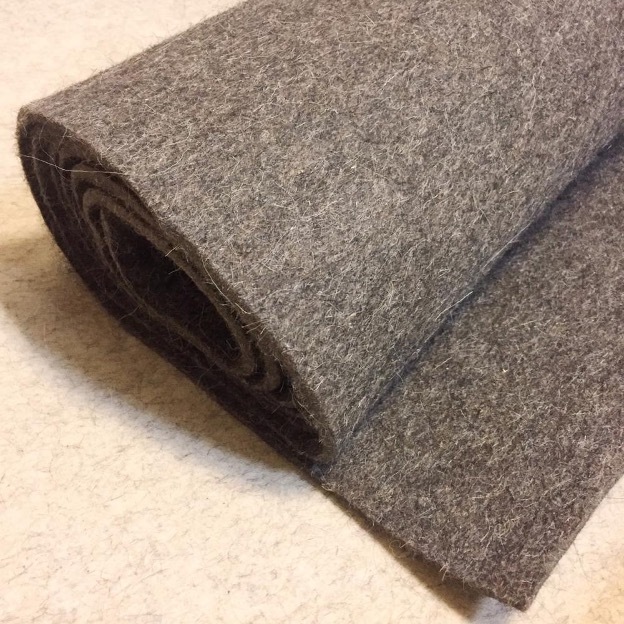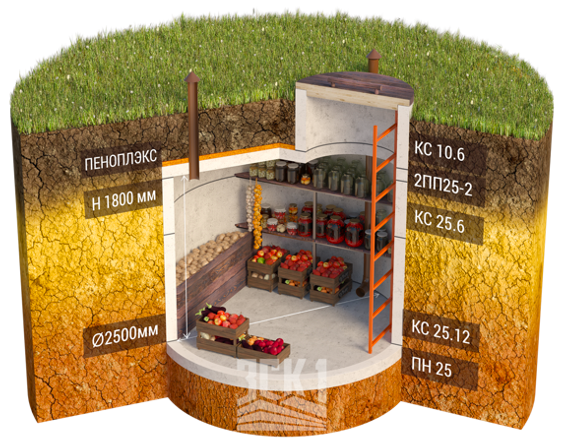Construction of a bathhouse on stilts requires a special approach to the construction of the floor. The main advantage of using screw piles is their reliability and stability, as well as their ability to provide good ventilation under the floor. However, this creates a need for additional insulation so that the floor in the bathhouse is warm and comfortable.
The process of installing a floor in a bathhouse on screw piles begins with preparing the base. After installing the pile structure, it is necessary to lay a waterproofing layer that will protect the wooden elements from moisture and rotting. This is followed by the installation of logs on which the flooring will be laid. It is important to consider that the wood must be treated with antiseptics for additional protection.
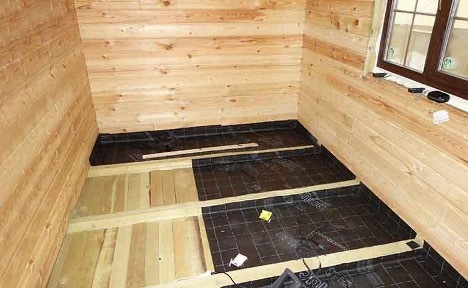
The content of the article
- Methods and materials
- Solutions and features
- Errors and solutions
- Finishing touches
Methods and materials
Insulating the floor in a bathhouse on screw piles is a key step in ensuring comfortable use of the bathhouse during the cold season. Here are the main methods and materials for insulation:
- Mineral wool: has good thermal insulation properties and is resistant to moisture.
- Expanded polystyrene: Lightweight and effective insulation that provides excellent thermal insulation.
- Extruded polystyrene foam: a denser and more durable option, suitable for use in high moisture conditions.
The insulation is laid between the joists, and a vapor barrier film is mounted on top of it to prevent moisture from entering the insulation. After this, you can begin laying the flooring.
Solutions and features
Creating a spill-proof floor in a bathhouse on stilts requires a careful approach. This type of floor prevents water from penetrating under the floor covering, which is especially important in washing rooms and steam rooms. For this purpose, moisture-resistant materials and special designs are used, for example, a sloping floor with drainage or a floor with a waterproof layer.
An important aspect is to ensure drainage so that water does not stagnate on the floor surface. This can be achieved by sloping the floor towards the drainage system or by using drainage channels and drainage trays.
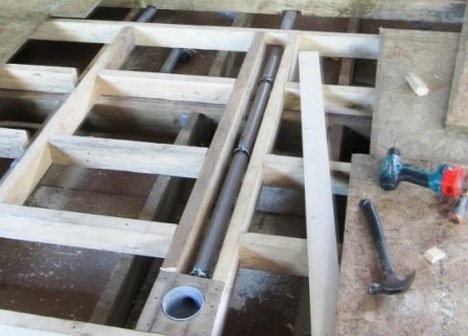
Errors and solutions
When building a bathhouse floor on stilts, certain errors may occur. They can significantly affect the quality and durability of the structure. It is important to know about the most common of them and ways to solve them.
One of the common mistakes is insufficient waterproofing. Moisture can lead to rapid destruction of wooden floor elements and insulation. The solution to this problem is to use high-quality waterproofing materials. And their installation is also important, which should completely cover the entire surface under the floor.
Proper insulation is also important. Using the wrong insulation or installing it incorrectly can lead to heat loss. This will also lead to increased humidity in the bathhouse. Choose insulation suitable for high humidity conditions. And lay it between the joists without gaps or gaps.
Insufficient slope for drainage can also be a problem leading to stagnant water. When laying the floor, it is necessary to ensure a slight slope towards drainage or drainage channels.
Ignoring the treatment of wood with antiseptics is another common mistake. Untreated wood will quickly deteriorate under the influence of moisture and temperature changes. All wooden floor elements must be treated with high-quality antiseptic agents.
The wrong choice of materials for the floor can lead to its deformation and rapid wear. It is necessary to choose materials intended for use in conditions of high humidity and temperature changes.
Finally, improper installation of joists can result in uneven loads on the floor and sagging. Make sure the joists are installed at the same distance from each other. It is also important to securely fasten them to the pile foundation.
Considering these possible mistakes and applying appropriate solutions, you can ensure the durability, safety and comfort of the floor in your screw pile bathhouse.
Finishing touches
After laying and insulating the floor in the bathhouse on a pile foundation, you should begin finishing it. Wood is most often used as flooring. It can be larch or cedar; they have good moisture resistance and pleasant aesthetic qualities. A wooden floor must be carefully treated with special compounds that will protect it from rot, mold and moisture.
Finally, the floor in the bathhouse is coated with varnish or oil to enhance its water-repellent properties and give it an attractive appearance. These measures will ensure the durability of the floor and make its use in the bathhouse as comfortable and safe as possible.
